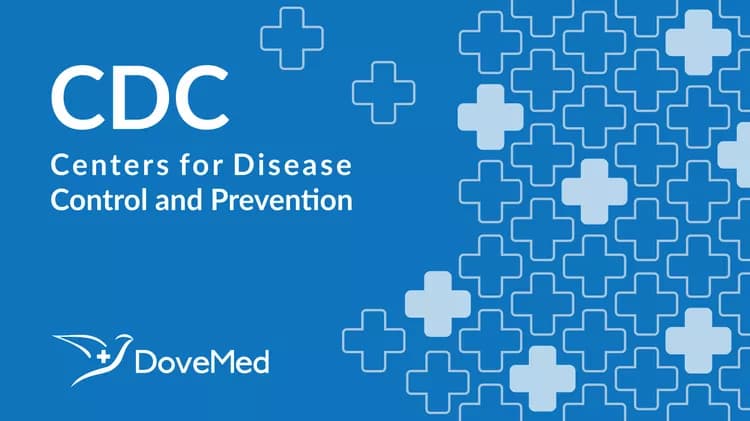
Discovery of New Transmission Patterns May Help Prevent Rotavirus Epidemics
Discovery of New Transmission Patterns May Help Prevent Rotavirus Epidemics
New Vaccines Shift the Course of Childhood Diarrhea-Causing Disease and Could Have Big Global Impact
New vaccines have the potential to prevent or temper epidemics of the childhood diarrhea-causing disease rotavirus, protect the unvaccinated and raise the age at which the infection first appears in children, federal researchers reported in a study today.
The findings were based on changing patterns of rotavirus transmission in the United States, where the disease is rarely fatal, and they have implications for combating epidemics in other countries where the death toll is much higher.
The research, published in the July 17 issue of the journal Science, is based on mathematical modeling that takes into account regional birth rates and predicted vaccination levels and effectiveness. The model suggests that when 80 percent or more of children in a given population are vaccinated, annual epidemics may occur on a less regular basis and more unvaccinated children will be protected. Data from 2007-2008, when vaccination first reached appreciable coverage levels in the United States, validate the model's predictions.
"Rotavirus vaccines have rapidly and dramatically reduced hospitalizations and emergency room visits for gastroenteritis in American children," said investigator Umesh D. Parashar, M.B.B.S., M.P.H., of the Centers for Disease Control and Prevention's National Center for Immunization and Respiratory Diseases. "This research not only explains the effects of the U.S. rotavirus vaccination program, but also lays the foundation for understanding the tremendous life-saving benefits of vaccination in the developing world, where more than half a million children die from rotavirus each year."
The study showed for the first time that the timing of rotavirus epidemics is dependent on the birth rate in the population because they are driven by infants who have never been infected before. In the United States, winter outbreaks would typically occur sooner in the higher birth rate states of the Southwest and later in the Northeast, where birth rates tend to be lower.
But with the introduction of two vaccines, the first in 2006, rotavirus outbreaks may become less frequent and less pronounced. They also may make their first appearance in children when they are older than the previous norm of less than 5 years of age, according to the research.
In older children, later onset would likely mean fewer cases and less severity of diarrhea.
The modeling and analysis were done by a team of researchers from the Fogarty International Center of the National Institutes of Health, the CDC, the Agency for Healthcare Research and Quality, the Pennsylvania State University, Princeton University and the George Washington University.
"When you can observe the immediate effects of vaccination and compare them to what the model predicted, you have a head start on stopping this preventable disease in countries where rotavirus unnecessarily kills hundreds of thousands of children," said Roger I. Glass, M.D., Ph.D., one of the study authors and director of the Fogarty Center.
Lead author Virginia Pitzer, Sc.D., of Penn State and the Fogarty Center, said, "Each population is going to have a different demographic makeup, and there may be conditions we cannot predict with certainty, but we believe introducing vaccination in the developing world will decrease the terrible burden of rotavirus."
The Fogarty International Center, the international component of the NIH, addresses global health challenges through innovative and collaborative research and training programs and supports and advances the NIH mission through international partnerships. For more information, visit www.fic.nih.gov.
The National Institutes of Health (NIH) – The Nation's Medical Research Agency – includes 27 Institutes and Centers and is a component of the U.S. Department of Health and Human Services. It is the primary federal agency for conducting and supporting basic, clinical and translational medical research, and it investigates the causes, treatments, and cures for both common and rare diseases. For more information about NIH and its programs, visit www.nih.gov.
The CDC is the nation's disease prevention and wellness promotion agency, protecting people's health and safety, providing credible information to enhance health decisions, and improving health through strong partnerships. The agency includes 18 institutes, centers and offices, with approximately 14,000, full time, part-time and contract employees. CDC is headquartered in Atlanta and has experts located throughout the United States and in 54 countries. For more information, visit www.cdc.gov.
For more information about rotavirus, visit www.cdc.gov/rotavirus/about_rotavirus.htm.
###
U.S. DEPARTMENT OF HEALTH AND HUMAN SERVICES
Related Articles
Test Your Knowledge
Asked by users
Related Centers
Related Specialties
Related Physicians
Related Procedures
Related Resources
Join DoveHubs
and connect with fellow professionals

0 Comments
Please log in to post a comment.